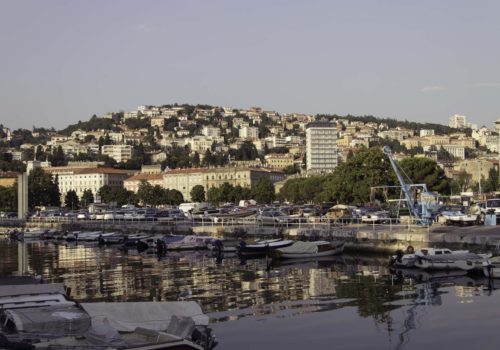The Curious Case of the Kathats
A statue of Ganesh rests on a shelf which also has a poster of a Dargah stuck on one side. The diya in front of the statue is not lit, except on special occasions and festivals. A tiny bronze statuette with the flag of India lies in another corner of the shelf with a tabeez hung around it.
The Kathat community of Rajasthan in Northern India has had a long history of an astounding syncretic culture which is now unfortunately slowly but steadily waning.
Predominantly Muslim, the Kathats had converted to Islam in the 13th century during Alauddin Ghori’s rule in Malwa. The historicity of their origins is however under dispute as many claim they are descendants of Prithviraj Chauhan. Conversion to Islam mainly meant following three aspects strictly – eating halal meat, circumcision and burial of the dead. The rest of the culture evolved on its own, old traditions and practices carried on while the new religion brought about some of its own. It is common to find households where the husband is Muslim, the wife Hindu and their parents with differing religions and now children with mixed names. One entire family in Lasadiya village has two names for all its members, the Hindu name being the nickname while the Muslim one used for all other purposes. Festivals have a special significance in their culture and all are celebrated with equal gusto, be it Eid, Holi or Diwali. Many bhajan singers too are Muslim Kathats. Ram-Raheem ek hain, kehte toh sab hain par hum usko maante hain. (Ram-Raheem are one, is what everybody says but we actually practice it) says Kalu Khan, the headman of Chang. He belongs to the Kathat community which in other areas are also known as the Cheetas or the Merats, being different lineages of the same family. The Kathats/Merats are now concentrated in the Pali and Beavar districts while the Cheetas are more in number near Ajmer.
But since the last 20 years or so both Hindu and Muslim religious groups( the VHP and the Tablighi Jamaat mainly) have been making attempts at bringing them back into the fold as both groups feel the Kathats belong to their religion. The main site for this dispute became education as the area to which they belong has been extremely backward with a dismal literacy rate. A slew of Vidyalayas (schools run by Hindus) and Madarassas (schools run by the Muslims) came up propagating their own doctrinaire ideology and were used for covert attempts at conversion. The hate laboratories worked overtime to poison ingenuous young minds and instruct them in a worldview completely in contrast with the world they know of at home. In Chang, a tiny village in the Pali district, the VHP school functions from a temple compound and runs sanskar kendras (classes on Hindu culture) where children are taught how to lead lives according to the Hindu culture. The Principal of one such school tells me that being born in Hindustan makes me a Hindu automatically. The Madarassas in their turn focus on Dini Taleem or the Islamic way of life. The redundancy of this sort of education became apparent to many people of the community and they began sending their children to other public schools, so much so that the Madarassa in Chang now has no local children. All the children in it currently are from the Mewat region in Haryana.
However with time, being caught in this constant crossfire, the people were almost willed into taking sides. Apart from these religious pulls came other political and social pulls. Ibrahim Sahab, a distinguished member of the Kathat Mahasabha explains, “We remained backward as we did not get benefits of being the minority nor did we get a separate quota but remained under the OBC category so most of the assistance did not accrue to us.” The desolate landscape all around is a constant reminder of the difficult conditions of survival. Until the cement factories opened up in the area, unemployment was rampant. The improvement however is terribly slow and social and economic conditions remain exigent.
In today’s world where religion has become more important than humanism, the Kathats find themselves out of place. This photo narrative attempts to explore the dichotomy of their existence and its ramifications for their future.
















